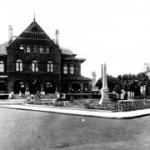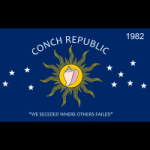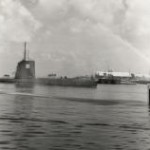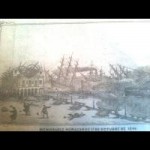Historic District
Clinton Square
This monument represents two perspectives on how the Civil War affected the residents of Key West. The obelisk in the center of the memorial plot was erected by the Navy Club of Key West for the Union soldiers who lost their lives in Key West during the Civil War. The metal fence surrounding the obelisk was erected by R.Vining Harris, a staunch Confederate and the father of the builder of the Southernmost House, to memorialize the loss of Confederate soldiers.
The Conch Republic
On April 23, 1982, the CONCH REPUBLIC declared secession of the Florida Keys from the United States. The short lived “war†was in response to a border patrol check point in Florida City subjecting all vehicles to searches for illegal immigrants. After announcing the “Proclamation of War†federal agents in attendance were attacked with stale loafs of Cuban bread followed by an immediate surrender of the Republic. The road block was removed but the secession and foreign aid demands have never been recognized.
Ponce de Leon
In 1513, one of the most famous Spanish explorers discovered and named Florida for the Spanish Empire. He initially believed that the land mass was a large island. His discovery of the Gulf Stream would change maritime travel for centuries to come. En route to the Gulf Coast of Florida he traversed the Florida Keys and discovered the Dry Tortugas. “Tortugas†is Spanish for turtle and “Dry†refers to the lack of fresh water on the islands.
Submarine Base
Following World War I, the Naval Station transformed the waters inside of the Outer Mole Pier into a submarine training base. Five metal “finger†docks were built to service submarines. During World War II, German U-boats sank 49 ships off the coast of Florida. The primary role of submarines stationed here during World War II was the destruction of enemy ships and protection of Allied supply convoys in the Atlantic. The base was decommissioned in 1974 as nuclear submarines replaced diesel powered ones.
1846 Havana Hurricane
On October 11, 1846, the worst hurricane in local memory struck. The storm surge flooded the streets with up to eight feet of water accompanied by Category 4 winds. The light house and all but six of the city’s six hundred buildings were damaged, destroyed or floated out to sea. Sixty people drowned and many of the survivors escaped by clinging to bushes and trees on high ground at Solaris Hill. In less than a decade following the hurricane Key West’s population increased 300%.




